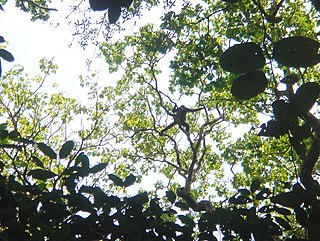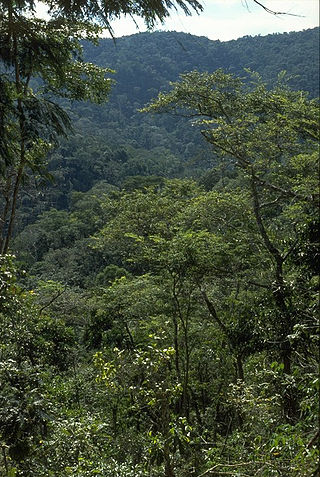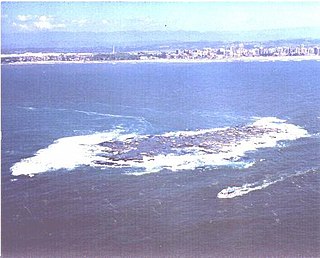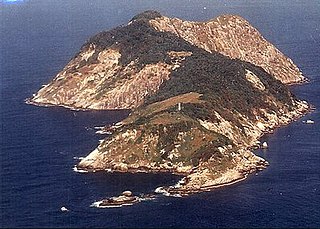Related Research Articles

A nature reserve is a protected area of importance for flora, fauna, funga, or features of geological or other special interest, which is reserved and managed for purposes of conservation and to provide special opportunities for study or research. They may be designated by government institutions in some countries, or by private landowners, such as charities and research institutions. Nature reserves fall into different IUCN categories depending on the level of protection afforded by local laws. Normally it is more strictly protected than a nature park. Various jurisdictions may use other terminology, such as ecological protection area or private protected area in legislation and in official titles of the reserves.

The Wildlife and Countryside Act 1981 is an Act of Parliament in the United Kingdom implemented to comply with European Council Directive 79/409/EEC on the conservation of wild birds. In short, the act gives protection to native species, controls the release of non-native species, enhances the protection of Sites of Special Scientific Interest and builds upon the rights of way rules in the National Parks and Access to the Countryside Act 1949. The Act is split into 4 parts covering 74 sections; it also includes 17 schedules.

The National Wilderness Preservation System (NWPS) of the United States protects federally managed wilderness areas designated for preservation in their natural condition. Activity on formally designated wilderness areas is coordinated by the National Wilderness Preservation System. Wilderness areas are managed by four federal land management agencies: the National Park Service, the U.S. Forest Service, the U.S. Fish and Wildlife Service, and the Bureau of Land Management.

Protected areas of Brazil included various classes of area according to the National System of Nature Conservation Units (SNUC), a formal, unified system for federal, state and municipal parks created in 2000.

There are several types of protected areas of the Czech Republic. The main form of landscape protection is delimitation of special protected areas. All the types of protected areas are determined by law.

An ecological station in Brazil is a type of protected area of Brazil as defined by the National System of Conservation Units (SNUC). The purpose is to preserve untouched representative samples of the different biomes in Brazil.

An extractive reserve is a type of sustainable use protected area in Brazil. The land is publicly owned, but the people who live there have the right to traditional extractive practices, such as hunting, fishing and harvesting wild plants.

A private natural heritage reserve is a type of preservation area in Brazil. The land is owned privately and may be used for research, education, eco-tourism and recreation. However, this use must be compatible with the goals of preserving the environment and maintaining biodiversity. Although the private reserves have been criticized, they are a valuable complement to publicly owned reserves.
The Protected Areas of the Azores are the basic administrative-territorial and conservation structures in the archipelago of the Azores and the surrounding oceans. The areas integrate the entirety of the Azores within its Exclusive Economic Zone, as well as the surrounding waters, under the international agreements and conventions. The network realizes the categorization of management for protected areas adopted by the International Union for Conservation of Nature (IUCN), adapting it to the specific geographical, environmental, cultural and political-administrative territory of the archipelago.

A Wildlife refuge in Brazil is a type of strictly protected area of Brazil defined by law. The purpose of the wildlife refuge is to ensure survival or reproduction of a species or community of flora or fauna, with access rules defined by the administrative agency.

A biological reserve in Brazil is a legally defined type of protected area of Brazil, a conservation unit that aims for full preservation of biota and other natural attributes without human interference. It may be visited only with prior approval of the responsible agency, and only for research or educational purposes.

National Parks are a legally-defined type of protected area of Brazil. The first parks were created in the 1930s with other parks being gradually added, typically protecting a natural monument such as a waterfall or gorge near to a coastal population centre. At least two early parks were later submerged by hydroelectric reservoirs. The first park in the Amazon rainforest was inaugurated in 1974. Today the national parks cover a huge area, particularly in the Amazon. However, many of them suffer from outstanding claims for compensation from former owners or users of the land, and many lack the management plans, physical infrastructure and personnel needed to support public visits. The responsible government agency does not have the capacity to provide services such as food and drink, souvenir sales and guided tours, and bureaucracy has delayed letting the private sector bid on providing such services.
A sustainable development reserve in Brazil is a type of protected area inhabited by a traditional population that seeks to preserve nature while maintaining and improving the life of the population through sustainable development.

An area of relevant ecological interest is a type of protected area of Brazil with unusual natural features and with little or no human occupation.

A national forest in Brazil is a type of sustainable use protected area. The primary purpose is sustainable exploitation of the forest, subject to various limits. These include a requirement to preserve at least 50% of the original forest, to preserve forest along watercourses and on steep slopes, and so on. More than 10% of the Amazon rainforest is protected by national forests or other types of conservation unit.

A wildlife reserve is a type of sustainable use protected area of Brazil. As of 2016 no conservation units had been created in this category.

A state park in Brazil is a legally defined type of protected area operated by one of the states. Their goal is to preserve important or beautiful natural ecosystems. Public access is allowed subject to regulations defined by the responsible agency.

A state forest in Brazil is a type of sustainable use protected area managed at the state level. The primary purpose is sustainable exploitation of the forest, subject to various limits. These include a requirement to preserve at least 50% of the original forest, to preserve forest along watercourses and on steep slopes, and so on.

The Montanhas de Teresópolis Municipal Nature Park is a municipal nature park in the state of Rio de Janeiro, Brazil. It protects an area of Atlantic Forest. The area has been badly degraded in some areas by human activity before the park was created, but efforts are being made to restore the former ecology.

The National System of Nature Conservation Units, abbreviated SNUC, is a set of regulations and official procedures that enable the federal, state and municipal government departments, as well as private initiative, to create, implement and manage Conservation Units (UC) in order to organize nature preservation in Brazil.
References
- 1 2 Lei No 9.985, de 18 de Julho de 2000, Art. 11.